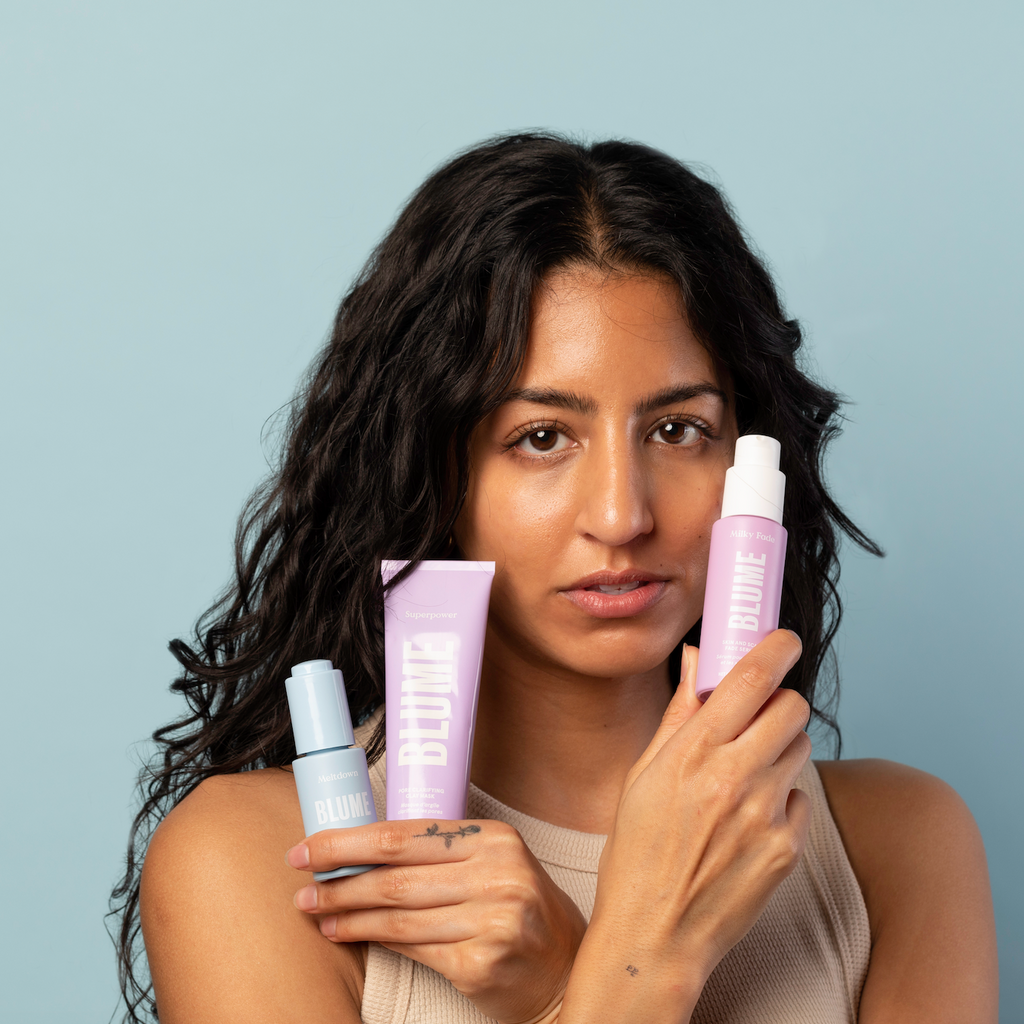Acne is one of the most common skin conditions in the world, affecting people of all ages, not just teenagers. While it’s frustrating enough to deal with active breakouts, many of us also face the long-term effects, like dark spots and acne scars. To truly prevent and minimize, it’s important to understand not only what causes acne, but also how it can lead to lingering marks and what steps can help break the cycle.
The Main Causes of Acne
Acne isn’t caused by one single factor, it’s usually a combination of several triggers happening at once. These can include:
1. Excess Oil Production
Your skin naturally produces sebum (oil) to keep itself moisturized. But when the sebaceous glands go into overdrive, whether due to hormones, stress, or genetics, pores can become clogged, setting the stage for breakouts.
2. Clogged Pores from Dead Skin Cells
Our skin is constantly shedding dead cells. If they aren’t properly removed through gentle exfoliation or natural turnover, these cells mix with excess oil and block pores, creating the perfect environment for acne-causing bacteria.
3. Bacteria Overgrowth
One key player in acne is a bacteria called Cutibacterium acnes. It’s always present on the skin, but when pores are clogged, it multiplies rapidly, causing inflammation and infection.
4. Hormonal Fluctuations
Hormones, especially androgens, can increase oil production and trigger breakouts. This is why acne often flares during puberty, menstrual cycles, pregnancy, or periods of high stress.
5. Inflammation
Inflammation is a big driver of both acne and the marks it leaves behind. When the skin is inflamed, it becomes more reactive and more likely to produce excess pigment after an acne lesion heals.
From Breakout to Dark Spots and Scars: The Connection
For many people, the battle doesn’t end when a pimple heals. Acne can leave behind two main types of long-term reminders:
-
Post-Inflammatory Hyperpigmentation (PIH): These are flat dark spots left behind after inflammation. They’re not scars in the traditional sense, but they can last for months without treatment.
-
True Acne Scars: These involve changes in skin texture, like pitted or raised marks, caused by damage to collagen during the healing process.
According to the American Academy of Dermatology, inflammation is the biggest factor that determines whether acne will leave behind discoloration or scarring. This means the faster you can calm breakouts, the lower your risk of lasting marks.

Prevention: Stopping Acne Before It Starts
While there’s no universal way to eliminate acne for everyone, a few preventative measures can help keep it under control and reduce the risk of both breakouts and long-term marks.
1. Keep Pores Clear
Regular, gentle exfoliation can help prevent dead skin cell buildup. Ingredients like salicylic acid penetrate into pores to clear debris and oil, while lactic acid gently resurfaces the skin’s surface.
2. Manage Oil Production
Look for products with niacinamide, which helps regulate sebum while also soothing inflammation and fading discoloration.
3. Reduce Inflammation Early
Spot treat active breakouts with gentle yet effective ingredients like benzoyl peroxide (in low concentrations) or sulfur to calm inflammation before it spreads.
4. Avoid Picking or Squeezing
It may be tempting, but picking causes more trauma to the skin and increases the chances of both scarring and dark spots.
5. Wear Sunscreen Daily
UV exposure can make dark spots darker and slow down the healing process. Mineral sunscreens are a great option for acne-prone skin, as they’re less likely to clog pores.
How to Remove Dark Spots on Face After Acne
Once a dark spot forms, patience and consistency are key. Here are some proven ingredients that help fade post-acne marks:
-
Vitamin C brightens skin and reduces melanin production.
-
Niacinamide fades discoloration and strengthens the skin barrier.
-
Licorice Root Extract, known for its soothing and anti-inflammatory properties that reduce redness and pigment.
-
Hyaluronic Acid to hydrate and support skin repair.
The Causes of Acne Scars (and How to Avoid Them)
Acne scars form when inflammation damages collagen in the skin. The deeper or more prolonged the inflammation, the higher the risk. This is why cystic acne, in particular, often leaves scars. Preventing scars comes down to:
-
Treating breakouts early before they become large or cystic.
-
Keeping inflammation under control with calming skincare.
-
Avoiding harsh scrubs or aggressive extractions that worsen trauma.
Long-Term Skin Health: Beyond Acne Treatment
Acne prevention and healing isn’t just about products, it’s also about lifestyle:
-
Balanced Diet: High-glycemic foods and dairy may trigger breakouts in some individuals.
-
Stress Management: Cortisol spikes can lead to more oil production.
-
Consistent Routine: Skincare works best when applied consistently over weeks and months.

Bringing It All Together with Milky Fade
Understanding the causes of acne, dark spots, and scars is essential for effective prevention and treatment.
That’s why Blume’s Milky Fade Spot & Scar Serum is thoughtfully formulated to address these issues with a balanced blend of potent yet gentle ingredients. By combining niacinamide to soothe and strengthen, stable Vitamin C to brighten, and botanical extracts to calm inflammation, Milky Fade supports your skin’s natural healing process while helping to fade existing dark spots and prevent new ones from forming.
For anyone seeking a targeted, science-backed solution to restore even, radiant skin without irritation, Milky Fade offers a reliable, clean, and inclusive approach that fits seamlessly into your skincare routine.



